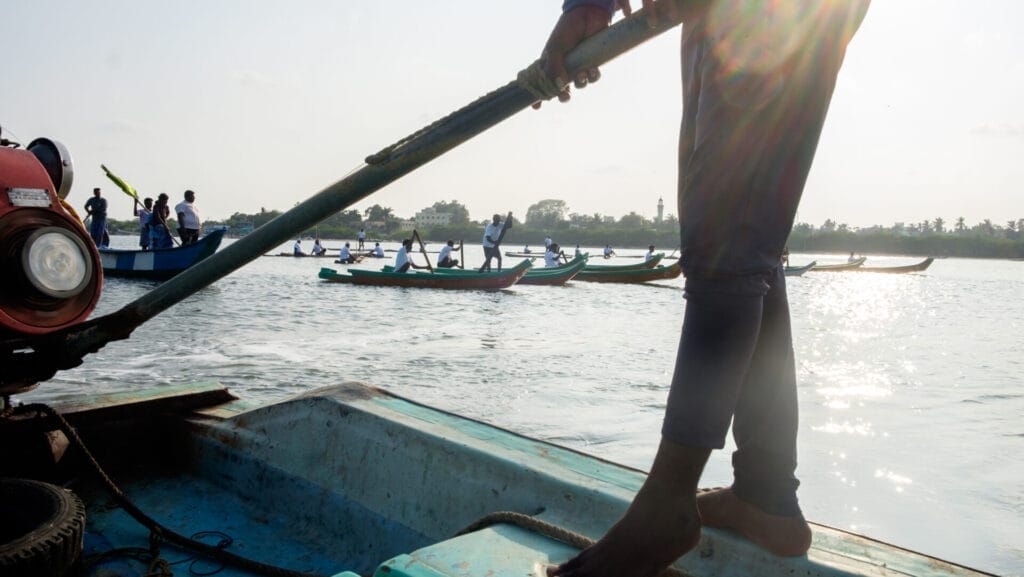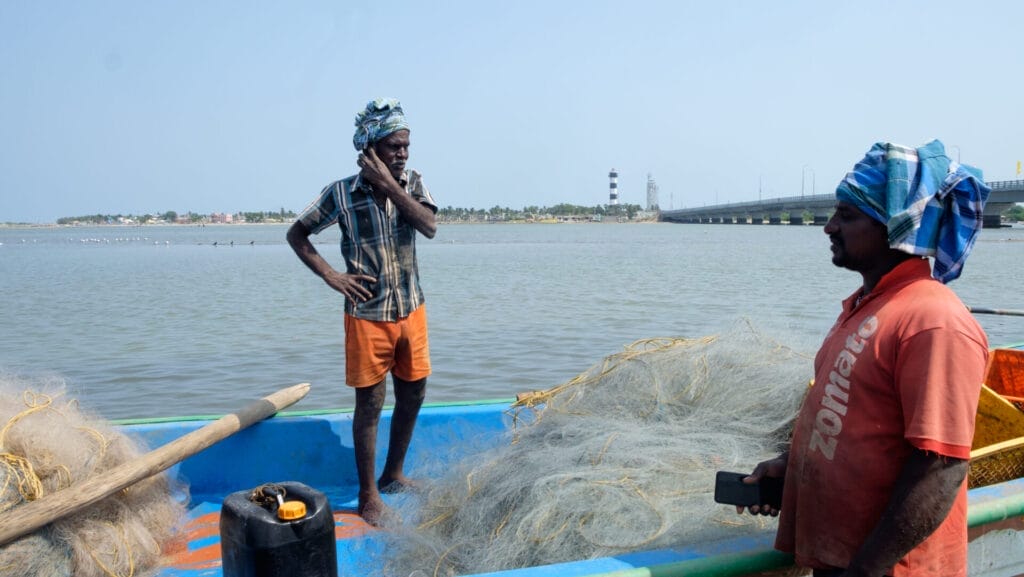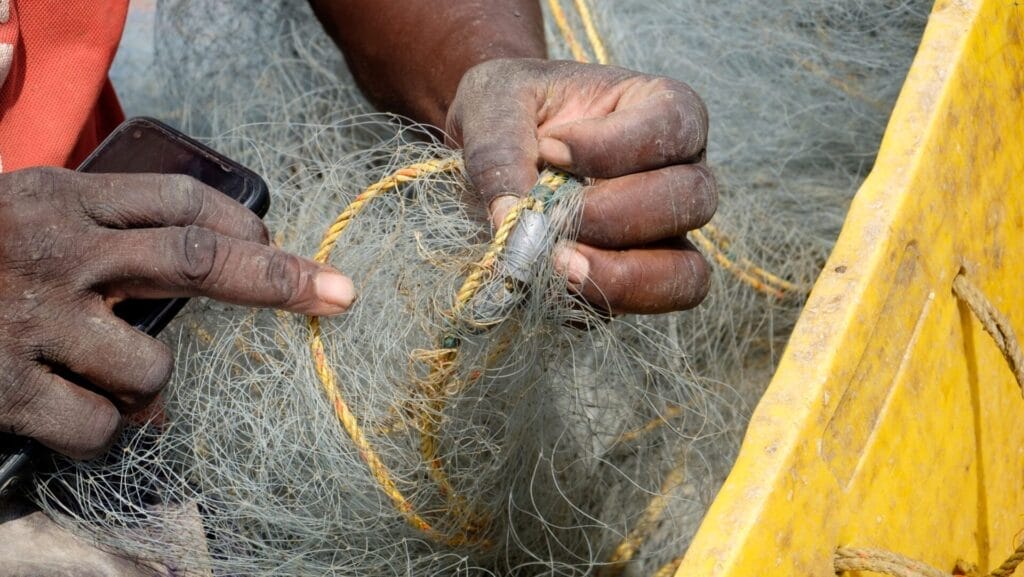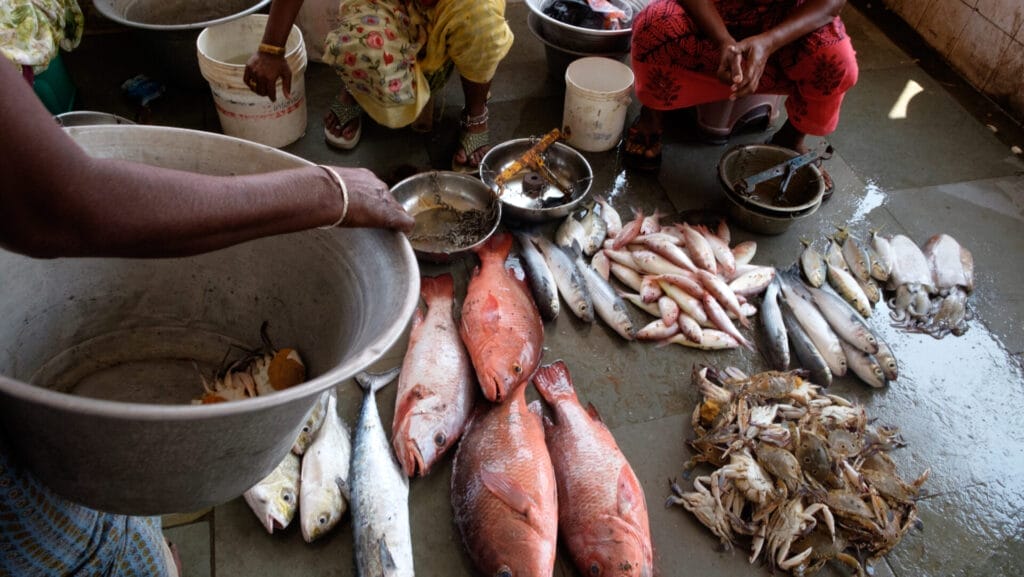As the evening sun creates an orange hue over the shimmering waters of Pulicat Lake, the fishermen get ready to launch their wooden kattumarams (catamarans) for the boat race. The participants, sitting in the middle of their boats and rowing furiously, plunge ahead amidst the cheering of villagers, who have dropped by to witness the event.
At least for a day, the fishing community and others, whose livelihoods depend on the marine ecosystem of the lake and sea, forget their troubles and have a good time. The boat race is a sort of affirmation by the village community around the lake to preserve it from environmental degradation.
As large-scale industrialisation and the construction of ports in nearby Ennore seem to have caused an imbalance in the lake’s ecosystem, the most visible impact is the drastic fall in water levels. This has affected marine life, and thus the livelihoods of the fisherfolk.
In Part 1 of a two-part series, we examine the depleting waters of Pulicat Lake and the fishing community that the water body sustains.
The catamaran race, held last month, is organised by AARDE, an NGO working to conserve wetlands, on Pulicat Day every year to coincide with Ramsar’s World Wetlands Day.
Xavier Benedict, founder trustee of AARDE says, “The race is a way of drawing attention to the dying livelihoods of fishermen and the disappearing tradition of using catamarans to catch the once famous Pulicat mud crabs.”
Read more: Calm after the storm in Chennai: What Cyclone Michaung left behind
A shrinking lake
Pulicat, the second largest brackish water lagoon in India is about 50 km from Chennai (in Thiruvallur district) and sustains residents living in 25 fishing villages around it. The wetland not only hosts many migratory birds during the winter months but, also attracts the Northeast monsoon rain clouds.
“The industrial activity caused silt to accumulate in the bar mouth of the estuary, resulting in a decrease in water level and also less flow/exchange of water between the sea and lake. This is a direct hit to the health of the benthic zone (the ecological area at the lowest level of a water body), which is important for the nourishment and growth of marine life. This causes dwindling harvests, directly affecting the income and livelihoods of the fishers,” says Yuvan Aves, naturalist and founder-trustee of Palluyir Trust for Nature Education and Research.
All this, coupled with the impending Adani port project, is pushing the Pulicat-Ennore ecosystem to the brink of further damage.
Disparity in the boats

Kolatthumedu, a village with 250 families, does not have even one fisherman who owns a motorboat. Most of them have fibre catamarans, at best. Even worse, the fishermen of neighbouring Jamilabad, still use catamarans made of wooden logs.
Bose, a representative of the Kolatthumedu village council says, “Earlier there was good marine abundance close to the shores and catamarans were enough to catch good harvests. With all the issues over the years affecting the ecosystem, the fish population has receded inwards into the sea.”
This has necessitated the use of diesel-run motorboats that can travel much longer distances, making it impossible for mechanical catamaran users to make any money from fishing close to the shores. “Only these two to three villages are using these catamarans,” he adds.
Read more: Oil spill in Ennore brings fishing to a standstill
Meanwhile, with consistently decreasing harvests, even fishermen using motor boats only earn between Rs 500 and Rs 2,000 a day, of which Rs 800 is spent on diesel.
“Some days when there’s no catch, we return empty-handed, with no returns for the money spent on diesel,” says Jeyapaul, a 57-year-old fisherman, who has been in the profession for 30 years and is currently fishing with a motorboat.
Threat to livelihoods

The fishing community has been grappling with a multitude of challenges, apart from the threat to their livelihood, and these include malfunctioning boats that get stuck in the water, medical emergencies and rough seas that kill almost 100 fishermen every year.

“The government gave us walkie-talkies with built-in GPS five years ago and also installed a receiving antenna tower,” says Mahesh, a young fisherman, pointing to the tower next to the fish market complex.
“Initially they were useful to communicate with other fishermen and the station on the shore. But the devices stopped working within a year. Once people had to spend money for repairs all the time, they stopped using them. Good quality walkie-talkies will solve a lot of security issues for us,” adds Mahesh.
Facing a bleak future

“The market, ideally designed for the local people to buy fish from the fisherfolk, and sell it to consumers, has been taken over by the more powerful exporting companies, that are ready to pay higher rates for the fish,” says Mullai Kodi, a 42-year-old local seller in the government-run fish market. She makes around Rs 1,000 on the days she manages to get a place in the market, which is around ten days a month.
Mullaikodi hopes the government would expand the market building so that more locals can do their business independently of big companies, thereby improving the livelihoods of other such single-income women like herself.
Many like Mullaikodi, who depend on the marine ecosystem in more ways than one, are looking at an uncertain future. On February 1, 2024, Tamil Nadu became the state with the highest number of Ramsar sites, which puts the focus on the protection of wetlands like Pulicat and the people living around it.
Save Pulicat to Save Chennai